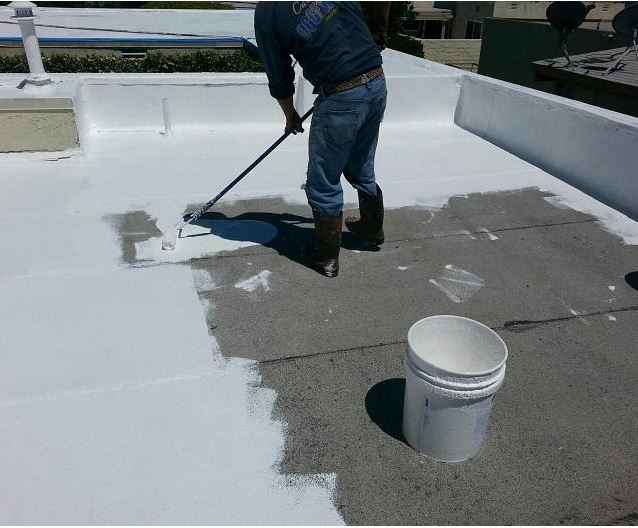
In construction, durability and resilience are paramount. Two indispensable products that have transformed the industry are waterproofing chemical and cement bonding agents. Waterproofing chemicals protect structures from moisture damage, while cement bonding agents ensure long-lasting adherence between different concrete layers or materials. Together, they play a pivotal role in enhancing structural integrity and extending the lifespan of buildings, bridges, and other constructions. This guide delves into the importance, benefits, and applications of these solutions, highlighting how they contribute to improved construction quality and longevity.
1. Understanding Waterproofing Chemicals
Waterproofing chemicals are specialized solutions applied to surfaces to prevent water infiltration and moisture damage. They create a barrier that protects concrete, masonry, and other building materials from the destructive effects of water exposure. With advancements in technology, there are now multiple types of waterproofing chemicals designed for different applications, each offering unique benefits.
Key Types of Waterproofing Chemicals
- Liquid Waterproofing Membranes:
- Liquid waterproofing membranes are a popular choice for roof and basement applications. Applied in liquid form, they dry into a flexible membrane that resists water and withstands expansion and contraction.
- Commonly used materials include polyurethane and acrylic, which provide excellent adhesion to various surfaces and can cover uneven areas seamlessly.
- Cementitious Waterproofing:
- Often used for water tanks, basements, and foundations, cementitious waterproofing mixes cement with waterproofing agents. This combination forms a rigid, impermeable layer that protects against moisture penetration.
- Cementitious waterproofing is easy to apply and is especially effective in wet environments where high humidity or direct water exposure is expected.
- Bituminous Coatings:
- Bituminous coatings, or asphalt coatings, are highly effective for protecting roofs and below-grade foundations. Known for their durability and flexibility, these coatings form a thick waterproof barrier.
- The bituminous layer can be modified with polymers to enhance its strength, elasticity, and resistance to UV rays, making it suitable for a wide range of applications.
Benefits of Waterproofing Chemicals
- Enhanced Structural Integrity: Waterproofing chemicals prevent water infiltration, which can lead to concrete erosion, rust in rebar, and gradual weakening of structural components.
- Improved Indoor Air Quality: By stopping moisture from entering interior spaces, waterproofing prevents the growth of mold and mildew, which can compromise indoor air quality and create health risks.
- Extended Building Lifespan: Waterproofing chemicals can double or even triple the lifespan of a building by shielding it from the damaging effects of water and moisture.
- Cost Savings: By reducing the need for frequent repairs and maintenance, waterproofing provides significant cost savings over time, making it a worthwhile investment for any structure.
2. Cement Bonding Agents: Strengthening Concrete Connections
Cement bonding agents are specialized adhesives used to improve the adhesion between new and old concrete layers or between concrete and other materials. This is especially important in repair work, where achieving a strong, durable bond between materials is essential for structural integrity. Cement bonding agents play a key role in achieving seamless, long-lasting repairs and improvements.
Types of Cement Bonding Agents
- Polyvinyl Acetate (PVA) Bonding Agents:
- PVA-based bonding agents are water-based adhesives used in non-load-bearing applications such as plastering and flooring. They provide excellent bonding properties but are not recommended for areas exposed to high humidity or moisture.
- Acrylic Bonding Agents:
- Known for their versatility, acrylic bonding agents are highly effective in bonding new concrete to existing concrete surfaces. They offer good resistance to water and chemicals, making them suitable for interior and exterior use.
- Epoxy Bonding Agents:
- Epoxy-based bonding agents are used in high-strength applications due to their superior adhesive properties. They are highly durable and provide excellent resistance to chemicals, moisture, and extreme temperatures, making them ideal for demanding construction tasks.
- Latex-Based Bonding Agents:
- Latex bonding agents are flexible and offer strong adhesion, even in moist environments. These agents are ideal for bonding concrete in applications where some movement or flexibility is anticipated.
Applications of Cement Bonding Agents
- Concrete Repair: Cement bonding agents are essential in concrete repair projects, where new layers of concrete must adhere securely to existing surfaces. Without bonding agents, the bond between new and old concrete can weaken over time, leading to cracks and potential failure.
- Masonry Applications: Bonding agents are commonly used in masonry to improve the adhesion of mortar or grout, ensuring strong joints and enhancing the overall stability of masonry structures.
- Plastering and Finishing: In plastering applications, bonding agents enhance the adherence of plaster to walls, preventing delamination and cracking over time. This is particularly useful in applications where plaster is applied over smooth or non-porous surfaces.
3. How Waterproofing Chemicals and Cement Bonding Agents Work Together
In many construction projects, waterproofing chemicals and cement bonding agents are used together to achieve a durable, water-resistant structure. For example, when repairing a concrete wall in a high-moisture area, a cement bonding agent can be applied to ensure a strong bond between the old and new concrete layers. Once the repair is complete, a waterproofing chemical can be applied over the surface to prevent moisture penetration.
Steps to Combine Waterproofing and Cement Bonding Techniques
- Surface Preparation:
- Before applying bonding agents or waterproofing chemicals, it is essential to prepare the surface properly. This includes cleaning the area to remove dirt, oils, and loose particles. In some cases, roughening the surface is recommended to improve the adhesion of the bonding agent.
- Application of Cement Bonding Agent:
- A cement bonding agent is applied to the area where new concrete or repair material will be added. This step is crucial in ensuring that the new material adheres strongly to the existing surface, preventing issues like delamination and cracking.
- Applying Waterproofing Chemicals:
- Once the bonding agent has been applied and the repair work is complete, waterproofing chemicals can be added as the final layer. This protective coating prevents water from penetrating the surface, adding an extra layer of protection to the structure.
Benefits of Combining Waterproofing and Bonding Solutions
- Enhanced Durability: By combining waterproofing and bonding, the structure gains both adhesive strength and resistance to water damage, which greatly extends its lifespan.
- Reduced Maintenance Needs: Structures treated with waterproofing and bonding agents require fewer repairs and maintenance, as they are less susceptible to damage caused by moisture or inadequate adhesion.
- Versatility: This combined approach is suitable for various applications, from foundations and basements to bridges, tunnels, and industrial facilities. By integrating these solutions, builders ensure that structures are resilient in even the most challenging environments.
Final Thoughts on Waterproofing Chemicals and Cement Bonding Agents
The importance of waterproofing chemicals and cement bonding agent in construction cannot be overstated. These products not only extend the lifespan of structures but also enhance their resilience against environmental challenges, reducing the likelihood of costly repairs and maintenance in the future. As construction technologies continue to evolve, the use of advanced waterproofing and bonding agents will remain essential to creating durable, high-quality structures. For contractors, architects, and property owners alike, understanding and utilizing these products can lead to safer, more resilient buildings that stand the test of time.
By incorporating waterproofing chemicals and cement bonding agents into your construction projects, you can achieve a seamless blend of strength, durability, and water resistance—qualities that are fundamental in modern construction and critical to the longevity of any structure.







